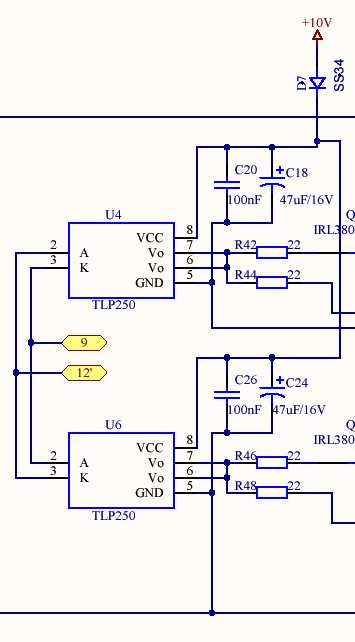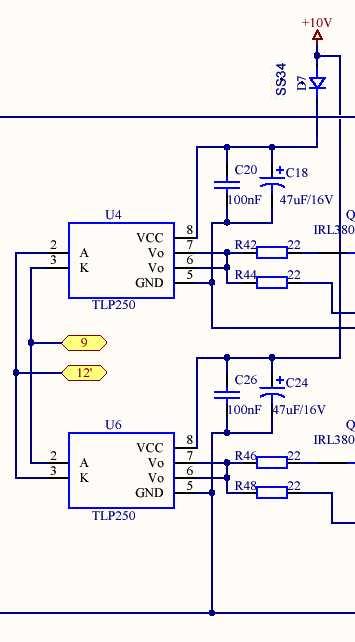Follow along with the video below to see how to install our site as a web app on your home screen.
Note: This feature may not be available in some browsers.










Taner said:Hi Friends,
Output supply traces is ~3.5mm width, for 230Vac this width is sufficient for 500VA output power. But for this power is required 24Vdc input power supply.
Project is still opened, not finished yet. I shared all altium project files and C code, and each of you can make required changes, useful for him.
Best regards,
Taner

FvM said:Reviewing the above PCB photos, I wonder what's the intended inverter power. I see supply traces with
about 2 mm width, good for maximum 6 - 8 A with standard 35 µm PCB, but I read about 500 VA on the schematic?
As another point, I noticed that the schematic diagramm (PIC16_Sine-wave_Inverter.pdf) shows a
wrong supply connection of low-side TLP250, but the PCB wiring seems to be different (hopefully correct).



FvM said:I'm talking of the detail shown below, VCC connection of U6. It's correct in Taner's schematic.

Regarding PCB trace widths, Taner has said everything necessary. His PCB also shows, how a better primary
wiring for the high current nets can be done. Even if you provide 24V supply for a 500 VA inverter, which is
much better of course, it will still need about 22-25 A input current. Impossible with a 2 mm trace.



Obviously. If you want to operate the inverter with a load some day, you should think about, though.I didnt think about input current while designing PCB.
